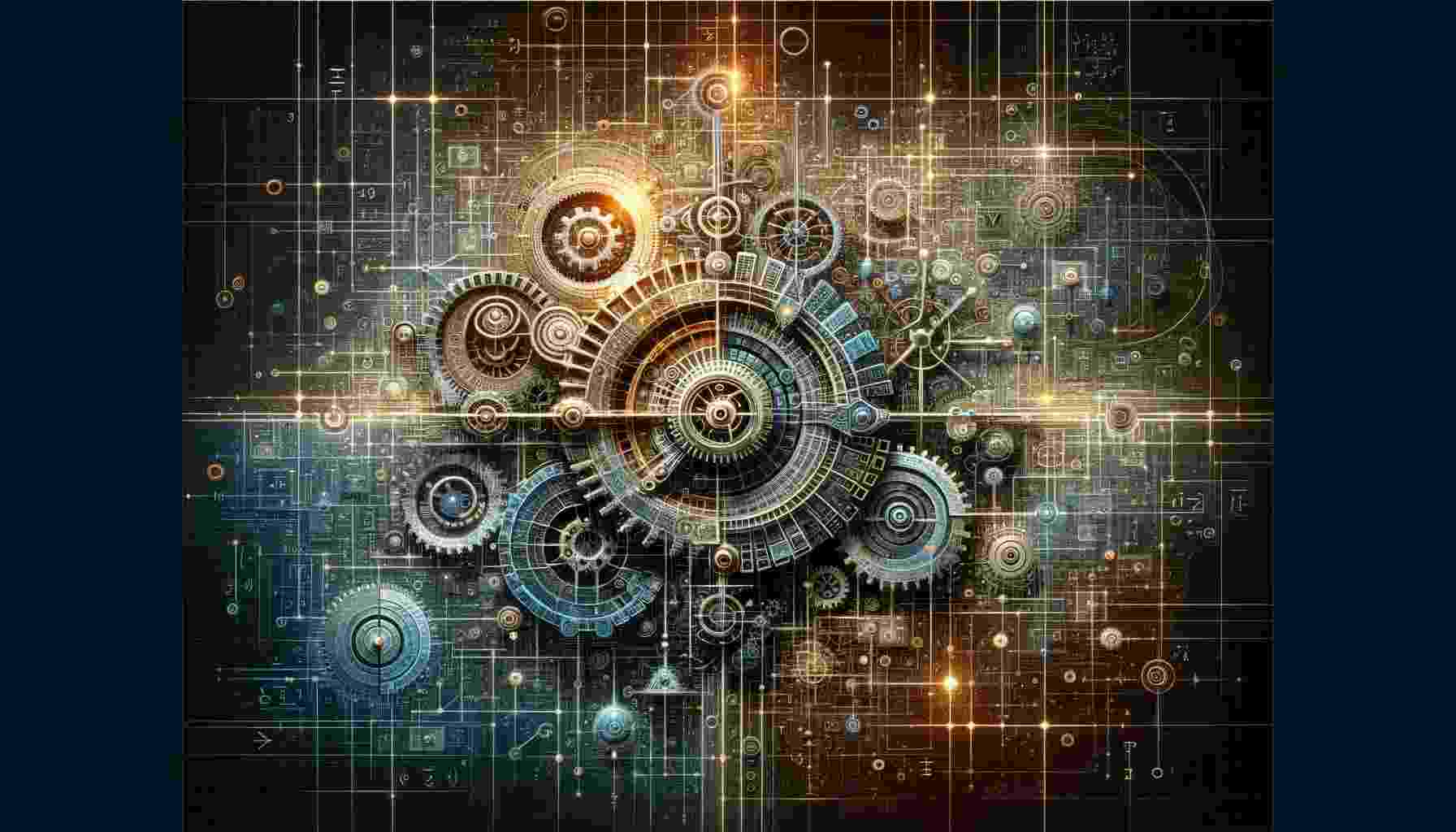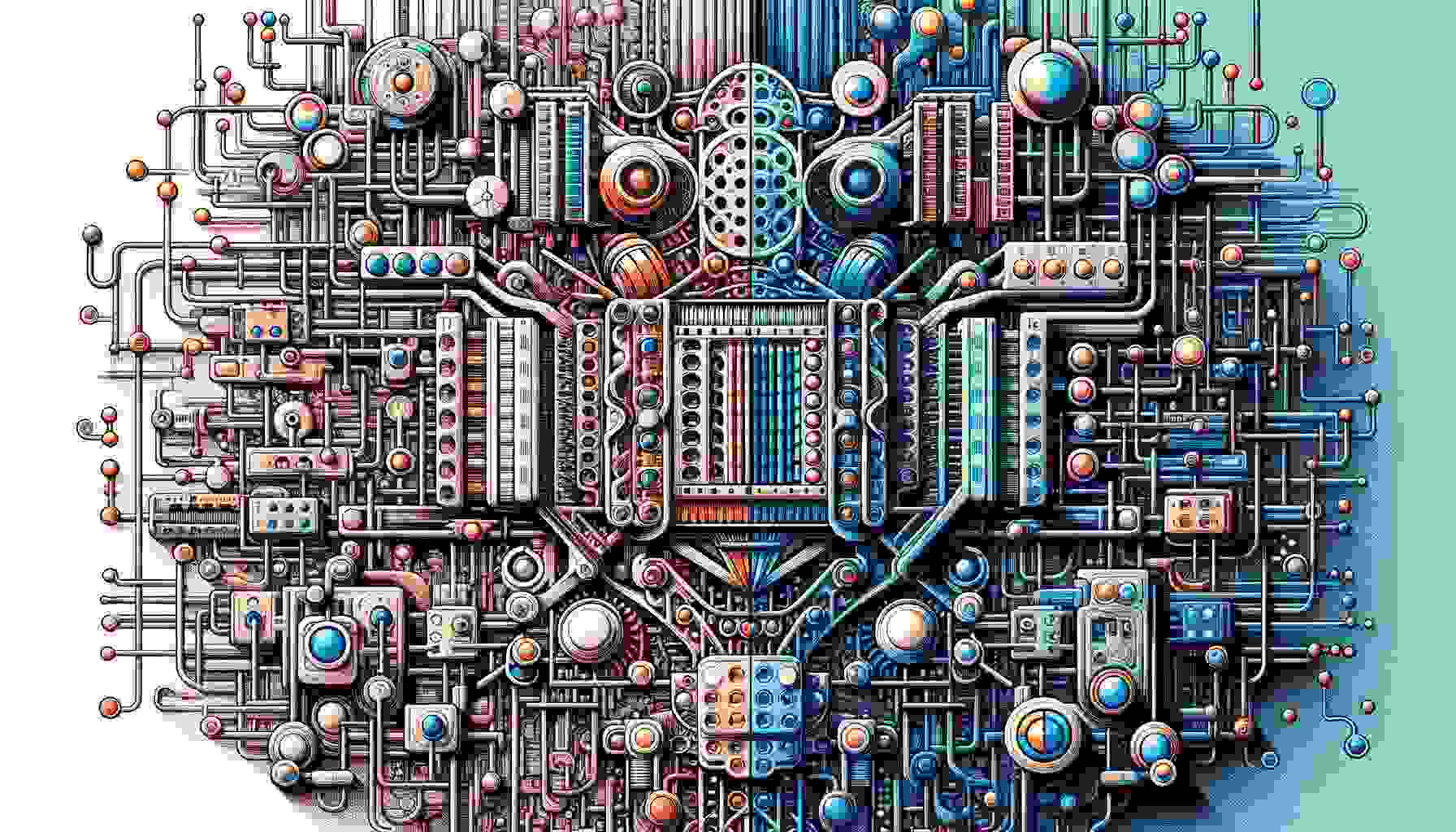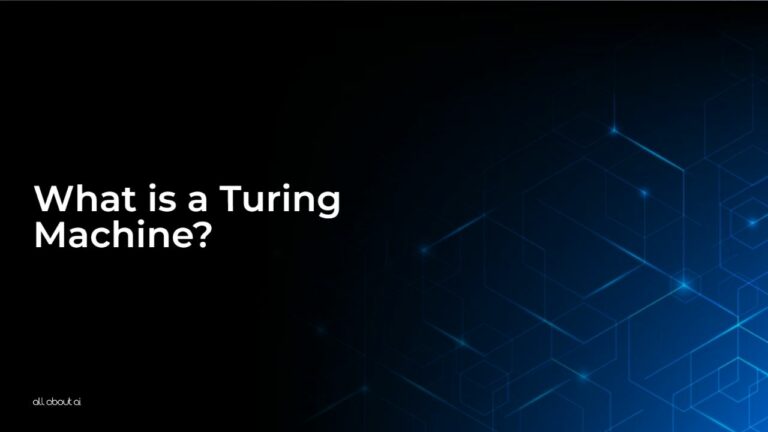What is a Turing Machine? Turing machines, conceptualized in the 1930s, owe their existence to the genius of Alan Turing. His groundbreaking work laid the foundation for modern computer science, providing a mathematical model of computation that can simulate any computer algorithm.
This foundational concept in artificial intelligence and computing refers to a theoretical device that manipulates symbols on a strip of tape according to a set of rules.
To learn more about turning machines and their significance in AI, keep reading this article written by the AI Researchers at All About AI.
Imagine a Turing Machine is like a really smart robot that can follow instructions to solve puzzles. A long time ago, a very clever man named Alan Turing thought of this idea. He’s super important because he helped create the ideas that made computers like the ones we use today. The Turing Machine is like playing a game. It uses a long ribbon that has different pictures or symbols on it. The robot follows special rules that tell it how to change these symbols or move along the ribbon to find answers to problems. This is kind of like how computers work – they follow instructions to do all sorts of things!What is a Turing Machine? Brain-Teaser Expert!
What is a Turing Machine- Structural Components and Functioning
It’s essential to understand the turning machine’s structural components and how they operate. This understanding is crucial for grasping the foundational concepts of AI and computation.
Let’s break down the key elements and functionalities of a Turing machine:
- Tape: The tape is the primary storage medium, divided into cells. Each cell can contain a symbol from a finite alphabet. The tape is theoretically infinite, allowing for limitless data processing.
- Head: This component reads and writes symbols on the tape. It can move left or right one cell at a time, enabling the machine to access and modify the tape’s data.
- States: A finite set of states controls the operations of a Turing machine. Each state dictates the action the machine takes, such as writing a symbol or moving the head.
In operation, a Turing machine follows a set of instructions based on its current state and the symbol it reads on the tape. This process includes:
- Reading the Symbol: The head reads the symbol manipulation in the current tape cell.
- State Transition: Based on the read symbol and current state, the machine shifts to a new state, as defined by its instructions.
- Writing and Moving: The machine writes a new symbol in the current cell and moves the head left or right, continuing the computation process.
These components and operations collectively enable a Turing machine to perform complex computations, embodying the fundamental principles of algorithmic processing in AI and computer science.
The Universal Turing Machine and Computability
It’s crucial to delve into the concept of the Universal Turing Machine and its monumental impact on computation theory.

This section illuminates how this theoretical construct extends the basic idea of a Turing Machine and why it’s a cornerstone in computational thinking.
Conceptual Overview:
- The Universal Turing Machine is an advanced form of the standard Turing machine.
- It is not limited to a single task but can simulate any other Turing machine.
- This adaptability is achieved by encoding the instructions for another Turing machine on the tape, which the Universal Turing Machine then processes.
Significance in Computation Theory:
- It serves as a fundamental model for modern computers, embodying the principle of programmable machines.
- The Universal Turing Machine conceptually proves that a single machine can execute any computable operation, given the correct inputs and instructions.
- This universality principle is a key pillar in understanding computational complexity and the limits of what can be computed.
- Understanding the Universal Turing Machine helps in grasping the full scope of Alan Turing’s contributions and the theoretical foundations of computer science, which are pivotal in the advancement of AI technologies.
Advantages of Turing Machines in AI and Computing
This concept is pivotal for understanding computational theory and has several key benefits:
- Flexibility in Problem-Solving: Turing machines can simulate any algorithmic process, making them extremely versatile for theoretical problem-solving.
- Foundation for Computer Science: They serve as a basic model for the functioning of computers, contributing significantly to the development of computational theory.
- Simplicity and Effectiveness: Despite their simplicity, Turing machines are powerful tools for understanding complex computational processes.
Limitations of Turing Machines
It is also important to acknowledge its limitations and challenges:
- Theoretical, Not Practical: Turing machines are abstract models and not practical for real-world computing due to their simplicity.
- Inefficiency in Operation: They operate in a linear, sequential manner, which can be less efficient compared to modern computers.
- Limited Storage Model: The theoretical infinite tape model does not translate well to the finite memory of real-world computing systems.
Turing Machines vs Finite State Machines: A Comparative Analysis
When comparing What is a Turing Machine to finite state machines, several key differences in structure and functionality emerge:

- Storage Capacity: Turing machines have infinite tape, offering more storage, while finite-state machines have limited memory.
- Computational Power: Turing machines are more powerful and capable of performing more complex computations than finite-state machines.
- Flexibility: Turing machines can change their state based on both the current state and the input, unlike finite state machines which depend only on the current state.
Applications of Turing Machines in Modern Computing and AI
The concept of a Turing Machine extends beyond theoretical computation into practical applications in modern computing and AI. This section explores how the principles of Turing machines influence various AI domains:
- Natural Language Processing (NLP): Turing machines contribute to the development of algorithms for parsing and understanding human language, facilitating advancements in NLP technologies.
- Robotics: In robotics, Turing machines inspire the algorithms simulation that enable robots to process instructions and make decisions, enhancing their autonomy and functionality.
- Machine Learning: The foundational theories of Turing machines are pivotal in designing machine learning algorithms, particularly in understanding computational limitations and capabilities.
The Legacy and Future of Turing Machines: Impact and Implications
Turing Machines, conceptualized by Alan Turing, have laid the groundwork for contemporary computing and continue to influence future advancements:
Pioneering the Digital Age:
Turing Machines formed the theoretical basis for the development of digital computers, revolutionizing how data is processed and managed.
Influence on Algorithmic Research:
They have been instrumental in advancing algorithmic research, providing a model for understanding complex computational processes.
Inspiring Future Technologies:
Turing Machines continue to inspire new technologies in AI, quantum computing, and beyond, shaping how future computational challenges are approached.
Navigate the captivating landscape of AI with our in-depth glossaries, designed to cater to learners at all levels, from eager novices to advanced practitioners. Treat this guide as your indispensable resource in grasping the subtle complexities and innovative breakthroughs of AI.Want to Read More? Explore These AI Glossaries!
FAQs
Is every computer a Turing machine?
Do modern computers use Turing machines?
Where is the Turing machine today?
Is RAM a Turing machine?
Can a Turing machine do everything that a real computer can do?
Wrap Up
This article was written to answer the “What is a Turing Machine” providing invaluable insight into AI and computing. This theoretical model, though not used in practical computing, continues to be a vital tool in understanding the limits and capabilities of what machines can compute.
If you’re looking to learn more about the wider world of AI, read through the rest of the articles we have in our AI Terminology Index.





